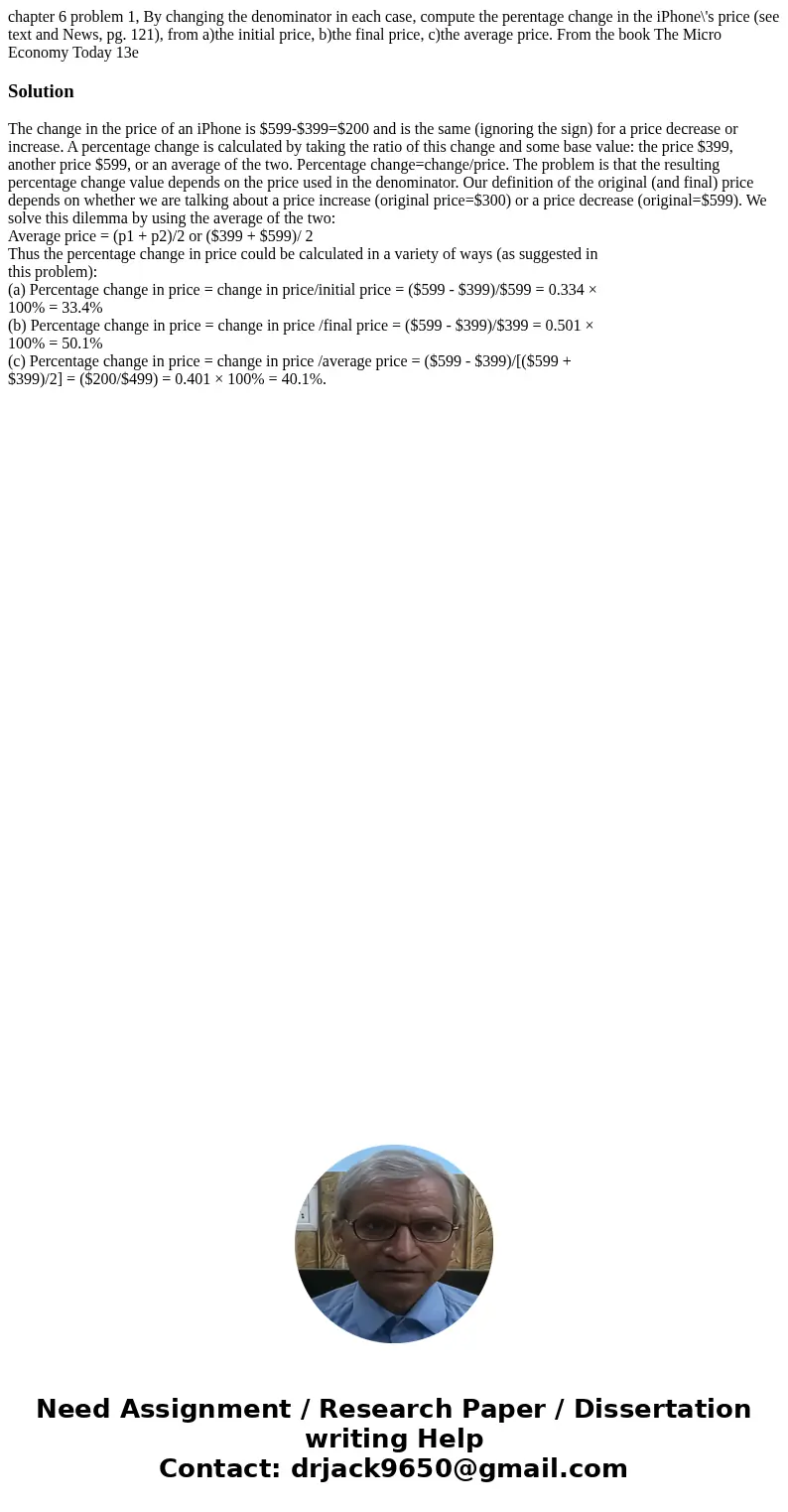chapter 6 problem 1 By changing the denominator in each case
chapter 6 problem 1, By changing the denominator in each case, compute the perentage change in the iPhone\'s price (see text and News, pg. 121), from a)the initial price, b)the final price, c)the average price. From the book The Micro Economy Today 13e
Solution
The change in the price of an iPhone is $599-$399=$200 and is the same (ignoring the sign) for a price decrease or increase. A percentage change is calculated by taking the ratio of this change and some base value: the price $399, another price $599, or an average of the two. Percentage change=change/price. The problem is that the resulting percentage change value depends on the price used in the denominator. Our definition of the original (and final) price depends on whether we are talking about a price increase (original price=$300) or a price decrease (original=$599). We solve this dilemma by using the average of the two:
Average price = (p1 + p2)/2 or ($399 + $599)/ 2
Thus the percentage change in price could be calculated in a variety of ways (as suggested in
this problem):
(a) Percentage change in price = change in price/initial price = ($599 - $399)/$599 = 0.334 ×
100% = 33.4%
(b) Percentage change in price = change in price /final price = ($599 - $399)/$399 = 0.501 ×
100% = 50.1%
(c) Percentage change in price = change in price /average price = ($599 - $399)/[($599 +
$399)/2] = ($200/$499) = 0.401 × 100% = 40.1%.

 Homework Sourse
Homework Sourse